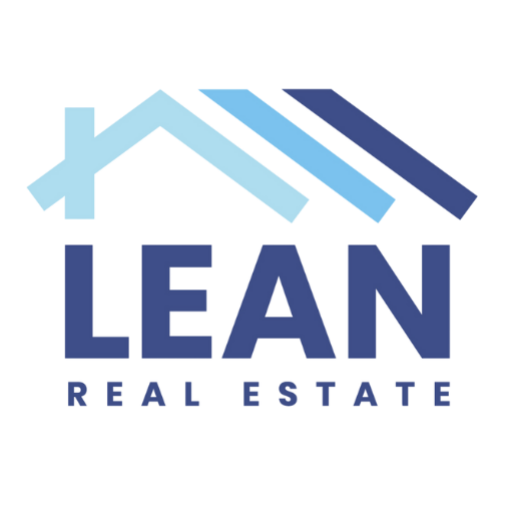
Investing in real estate can be a powerful way to build wealth, but the jargon can sometimes feel like a foreign language. Whether you’re new to the game or a seasoned investor, understanding key terms can boost your confidence and help you make informed decisions. Today, we’ll break down some essential real estate investing terms to help you navigate the field with ease. For anyone looking to invest in multifamily real estate with Lean Capital, this guide serves as a quick reference for better understanding investment opportunities.
1. Cap Rate (Capitalization Rate)
Think of the cap rate as a quick way to size up an investment property’s potential. It’s a percentage that tells you how much return you might get, based on the property’s income versus its price. A higher cap rate means bigger potential returns, but it could also mean higher risks. Lower cap rates are like a “safe but steady” option—they might not make you rich overnight, but they’re more stable.
Why It’s Important: Whether you’re comparing properties in a hot urban market or a quieter rural area, the cap rate helps you decide if the risk and reward line up with your goals.
Example: A property with $50,000 in annual income and a $500,000 price has a 10% cap rate—a potentially high return!
Comparison: Urban multifamily properties often have cap rates around 5-6% because they’re reliable and in demand. Meanwhile, rural commercial properties might have cap rates of 10% or more, which sounds great, but there’s often a catch—like higher vacancy risks.
2. NOI (Net Operating Income)
Summary: NOI is the heartbeat of your investment property. It’s the money left over after you’ve paid all the day-to-day costs like maintenance, property management, and utilities—but before big things like your mortgage. It’s a crucial number because it shows how profitable your property is and lays the groundwork for calculating things like cap rates and cash flow.
Why It’s Important: Without knowing your NOI, it’s hard to measure your property’s financial health or plan your investment strategy. It’s like knowing your take-home pay—it’s what really matters at the end of the day.
Example: If you bring in $100,000 in rent and spend $30,000 on expenses, your NOI is $70,000.
Comparison: Multifamily properties tend to have more stable NOIs because income comes from multiple tenants. Single-family rentals, however, can feel the pinch if they’re vacant for even a month.
3. Cash-on-Cash Return
Summary: Cash-on-cash return answers the question, “How much am I making on the money I’ve put into this property?” It’s a simple way to measure your annual return on the cash you’ve invested, which makes it especially handy for folks who want to see if their hard-earned money is working as hard as they are.
Why It’s Important: If you want a quick snapshot of how well your investment is doing in terms of yearly income, this is the metric to watch. It’s especially helpful for properties you’ve financed since it only looks at your out-of-pocket cash, not the total property cost.
Example: Invest $100,000, earn $10,000 in a year, and you’ve got a 10% cash-on-cash return. Easy math, right?
Comparison: Multifamily properties usually shine here, offering steady returns thanks to multiple tenants. High-value luxury properties? They might focus more on long-term appreciation, so don’t expect big cash flow right away.
4. Depreciation
Summary: Depreciation is the unsung hero of real estate investing. It’s a tax perk that lets you write off part of your property’s value over time, even though it might actually be increasing in market value. For multifamily properties, this deduction is spread over 27.5 years, helping you lower your taxable income and keep more of your earnings.
Why It’s Important: Lowering your taxable income means more money in your pocket. Depreciation can significantly boost your overall cash flow, especially when paired with smart tax planning strategies.
Example: A $1 million property might offer you a $36,364 tax deduction every year, which can add up to serious savings.
Comparison: Multifamily properties have an edge here because they depreciate faster than commercial properties, which have a 39-year schedule. That means multifamily investors see tax benefits sooner.
5. Vacancy Rate
Summary: Vacancy rate is the percentage of empty units in a property. It’s like a pulse check on how well your property is performing. Lower rates are great—they show strong demand and stable income. High vacancy rates, on the other hand, might mean something’s off, like the rent is too high or the property needs some TLC.
Why It’s Important: Vacancy rates give you insight into market demand and help you predict future income. They’re a critical factor for anyone relying on rental income to meet their financial goals.
Example: Vermont’s low vacancy rate of around 3% highlights strong demand for rentals, especially compared to the national rate of 5.8%.
Comparison: Multifamily properties typically have lower vacancy rates than single-family homes because losing one tenant doesn’t mean losing all your income. With single-family homes, it’s all or nothing.
Why Real Estate Terms Matter
Knowing the basics, like cap rate, NOI, and depreciation, helps you make smarter investment choices. These terms may sound technical at first, but they’re tools that can empower you to grow your portfolio and hit your financial goals. At Lean Capital, we’re here to make these concepts accessible so you can invest with confidence.
👉 Want to learn more? Reach out to us at www.leancapitalllc.com to start your journey today.
